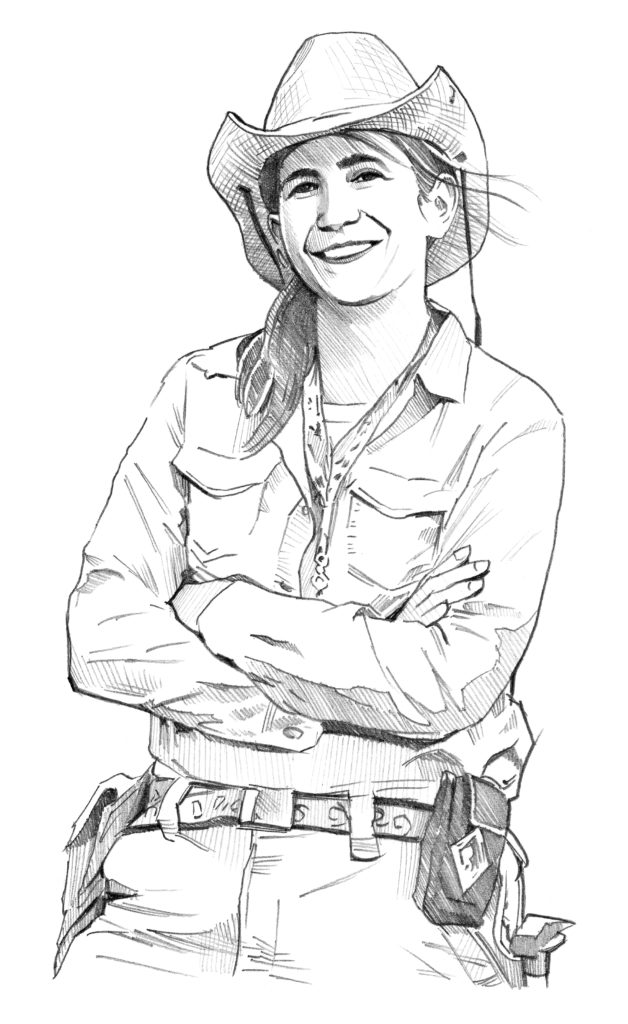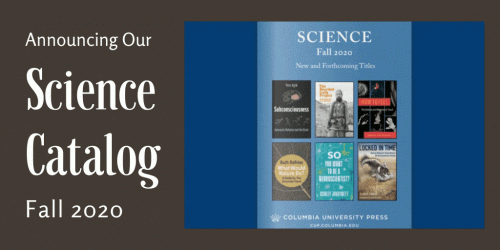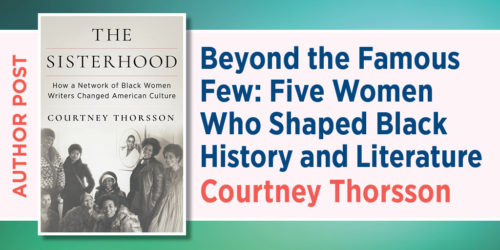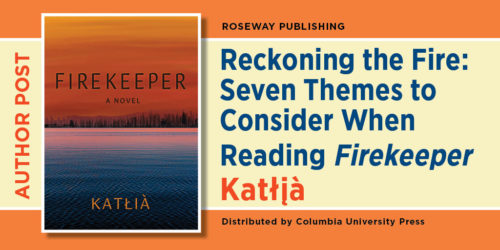How On-Screen Women Scientists Can Reduce Sexism in ScienceLisa M. P. Munoz
Lisa M. P. Munoz

When I was an engineering student at Cornell University, one of my first assignments in a science communications class was to analyze scientists in films to better understand public perception of science. Jurassic Park, Contact, Armageddon, Back to the Future—there were many to choose from. I went with the lesser-known Manhattan Project, which is about a secret plutonium refinement lab in Ithaca, New York. It was a fun to watch movies for credit, but I did not fully appreciate at the time how central the idea of the assignment was to the scientific enterprise. After all, movies are fiction and science is not; science is about data and facts, not stories, right?
In hindsight, my approach was naive. After more than twenty years of working in various facets of science communication, I now view all science communication, even short tweets, through the lens of storytelling. The stories we tell about science are not only what shape how people perceive science but also what areas are propelled forward, where progress and change is most possible. Think about how the storytelling around the moon landing during the Cold War led to an unprecedented era of U.S. space exploration, funded and widely supported by the public.
The same is true for the gender gap in science, the subject of my book Women in Science Now: Stories and Strategies for Achieving Equity. Women in science face challenges to advancement at nearly every phase of their careers. The solutions start, I believe, with storytelling. The stories we tell about science shape how we think about who scientists are and what they do from a young age, and they hold an enormous power for change through awareness and then action.
Stories for Representation
For many people, television and films are their first exposure to what science or scientists look like. Most people do not grow up with fossil digs in their backyard, for example. The paleobotanist Ellen Currano, who is featured in my book, remembers as a child seeing most paleontologists in documentaries as “white bearded men.” Fortunately, that did not deter her from her paleontological path. “If you asked me to draw a paleontologist when I was a child, I would have drawn a bearded man. But I was still going to be one,” Currano shared in my book.
Indeed, research by the Geena Davis Institute on Gender in Media and others shows how white males still dominate on-screen portrayals of scientists. One study from 2021 of television, movies, and streaming programming in the United Kingdom found that male characters in STEM fields outnumber female characters in STEM 2-to-1.[i] And we still see discussions of this popping up, most recently with the “Barbenheimer” cultural phenomenon, with many noting the huge contrast between gender representation in the films Oppenheimer and Barbie.[ii]
Despite this gap, we do see on-screen representation of women in science increasing. Shows like Doc McStuffins, which portrays a six-year-old African American girl who plans to be a doctor like her mother, helped pave the way for other female-centered STEM shows. We now have Hidden Figures (2017), the Ghostbusters remake (2016), Arrival (2016), and Black Panther (2018), all prominently featuring female scientists. And we have shows like Foundation and For All Mankind, which increasingly portray women scientists in the hero role.[iii]
Unlike my undergraduate self, I now understand how much such representation in media matters. In a study from the Lyda Hill Foundation and the Geena Davis Institute on Gender in Media, researchers found that TV and film portrayals can encourage young women to consider careers in science, with more than 80 percent of those surveyed saying that seeing female scientists on screen was important.[iv]
Beyond representation
On-screen portrayals of scientists are critical for showing people (especially children) who can be a scientist, as well as for establishing the culture of science—how the public perceives the enterprise and how it might change for the better. When I was researching films for that undergraduate project, for example, I was struck by how so many depicted a lone scientist making a singular discovery in the lab that either heralded disaster or progress. Yet science is rarely like that; it is very much a team effort.
Talk to anyone, whether in academia, at a startup, or in a large science-based company, and they will say how many people it takes to make science happen. In some ways, it’s surprising that the “lone scientist” stereotype has persisted given the very public successes of things like NASA’s Martian rover missions, the development of COVID-19 vaccines, or even the real-life Manhattan Project. But people can’t resist that hero narrative. Think about recent film Oppenheimer. We love to hear those individual stories of struggle or achievement.
So why does it matter that people want to stick with the tried-and-true hero narrative? Two reasons: One is that it changes who is inspired to be a scientist, as these depictions may inadvertently deter, for example, social extroverts. But the second, more indirect, result is that such stereotypes feed back into the scientific process. The same biases that drive us toward the hero narrative in storytelling drive us to recognize scientists as individuals rather than as part of teams.
We see this in how we recognize achievements in science. Historically, the Nobel Prize has been largely awarded to individuals. For scientific papers, we often only recognize the “lead author” even though they require teams of people. Some publishers are moving toward new models for showing group credit on papers, but the change is slow, as giving credit to more people requires more resources, whether space in publications, funds for awards, or time in giving talks.
That credit can cycle back into who society feels merits a full-length feature film on their life. As historians surface more information about forgotten women in science, I am hopeful we will see biopics about them. Perhaps the next film related to the Manhattan Project can be about the Austrian physicist Lise Meitner, whose research was pivotal in understanding nuclear fission (but who notably did not want her work used for a bomb).[v] Those portrayals in turn can change how people view scientists, creating more societal recognition of women scientists.
In addition to films shaping public perception of science, films can be used as tools to reduce sexism in the scientific enterprise. One example I discuss in my book is how social psychologists made short films about bias and discrimination in science to help reduce the gender gap. In a recent work, researchers (including myself) looked at the positive influence of a full-length documentary, Picture a Scientist, on scientists’ intent and actions to mitigate against discrimination in their workplaces.[vi] Crucially, most of the research shows that these film interventions must be paired with discussion about actions that can be taken to make such strides.
As the body of research grows, so too do the potential solutions available to close the gender gap in STEM fields. We can use science to help fix both the public perception of science and the culture of science, and films provide a promising path forward.
Lisa M. P. Munoz is a science writer and the founder and president of SciComm Services, a science communications consulting firm. She is the author of Women in Science Now: Stories and Strategies for Achieving Equity.
[i] Caroline Heldman, Shrikanth Narayanan, Rebecca Cooper, et al., Closing the Stem Gender Gap: A Study of Gender and STEM Representations in UK Family Television (Geena Davis Institute for Gender in Media / British Consulate in New York, 2021).
[ii] Carl Kurlander and Chandralekha Singh, “Female Physicists Aren’t Represented in the Media—and This Lack of Representation Hurts the Physics Field,” The Conversation, July 12, 2023.
[iii] Lisa M. P. Munoz (@lisampmunoz), “Ready for fiction to retire, or at least use less, the image of a math/science prodigal genius who solves problems w/o training or practice, like Gaal in #Foundation (still a great show!). Prefer seeing Aleida, smart & driven, building up her STEM skills in #ForAllMankind #scifi,” witter/X, July 8, 2023, 5:34 p.m.
[iv] Portray Her: Representations of Women STEM Characters in Media (Geena Davis Institute on Gender in Media / Lyda Hill Foundation, 2018).
[v] Olivia Campbell, “Lauding Lise Meitner, Who Said ‘No’ to the Atomic Bomb,” Undark, August 24, 2023.
[vi] Evava Pietri, Arispa Weigold, Lisa M. P. Munoz, and Corinne Moss-Racusin, “Can Films Impact Sexism in STEM? Examining This Possibility with the Popular Documentary Picture a Scientist,” PsyArXiv, December 8, 2021.
Categories:Author-Editor Post/Op-EdScienceWomen In ScienceWomen's History Month
Tags:ArmageddonArrivalBack to the FutureBlack PantherContactDoc McStuffinsEllen CurranoFor All MankindFoundationGhostbusters remakehero narrativeHidden FiguresJurassic ParkLisa M.P. MunozLise Meitnernhattan ProjectWomen in Science NowWomen's History Month 2024











